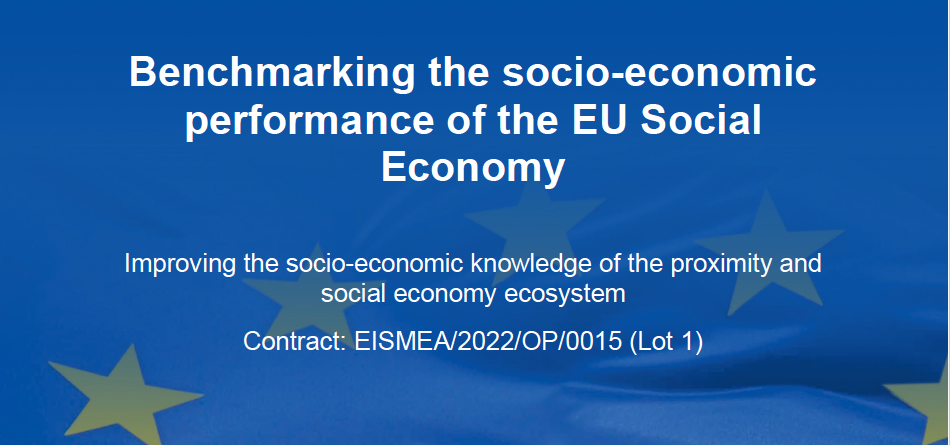The study for the European Commission – European Innovation Council and SMEs Executive Agency (EISMEA) has been published was presented by the authors from CIRIEC and EURICSE in Brussels on the 7th of February.
The study is very timely as the discussions on how to fund social innovation by the EU programmes are taking place. It is important to know the state of the art of the social economy in Europe in view of the implementation of the Social Action plan.
The aim of the study was to measure the size of the social economy (SE) and analyse several aspects (e.g. SE tradition, recognition, evolution, SE contribution to industrial ecosystems, etc.). The task was to use the same methodology across the 27 EU member states.
Some numbers from the study:
More than 4.3 million social economy entities (including more than 246,000 social enterprises) in the EU.
Breakdown by type:
- 88.7% Associations
- 5.6% Cooperatives
- 3.3% Foundations
- 0.2% Mutual benefit societies
- 2.3% Other legal forms
Employment in the Social economy:
- At least 11.5 million people (6.3% of the employed population) are occupied in the SE.
- Data does not cover Malta and the Netherlands (where data is unavailable).
- More than 6.2 million people are employed in associations and 3.3 million in cooperatives.
- Social enterprises employ at least 3.9 million people.
However, there are many challenges related to the collection of data:
- Social Economy is neither codified nor clearly defined in many EU member states.
- Conceptual convergence of Social Economy and Social Enterprise
- The understandings of the concepts vary across EU due to various traditions
- Availability of statistics
One of the big challenges was related to deciding what is “in” and what is “out” in each member state.
According to the study the social economy inlcudes:
- Cooperative/mutual pursuing social aim
- Ex lege social enterprise
- Traditional cooperative/mutual benefit society
- Association/foundation running economic activities
The following are NOT part of the social economy:
- Purpose-driven enterprise/B corporation/Benefit corporation
- Conventional enterprise
- Voluntary organization/Advocacy association
Based on the Estonian example the situation is not that simple. For example, housing associations are non-profit associations in Estonia whose aim is the joint management of the buildings and the representation of the common interests of the members/apartment owners. They do not have economic activities for social purpose and have some functions of the advocacy organisations. However, as they are associations by their name, they belong to the social economy typology in Estonia. In Estonia the social economy term is not very known and there is an emerging acceptance of the term of a social enterprise. The corporate social responsibility concept is more wides-spread.
It can be concluded that social economy and its potential is underestimated as a research field and as a policy domain in the member states and therefore there is
- Lack of a unitary vision
- Strong internal division
- Lack of available data
The situation calls for the new approaches to the collection of data, e.g. including social economy variables in existing surveys, including Eurostat, hiring social economy coordinators in public institutions, tailored policy approaches, establishing observatories, developing rigorous statistics.
Read the full report here: https://op.europa.eu/en/publication-detail/-/publication/96358ed7-74a6-11ef-a8ba-01aa75ed71a1/language-en
The Estonian data was collected by Katri-Liis Lepik with the helpf of the Statistics Estonia.





